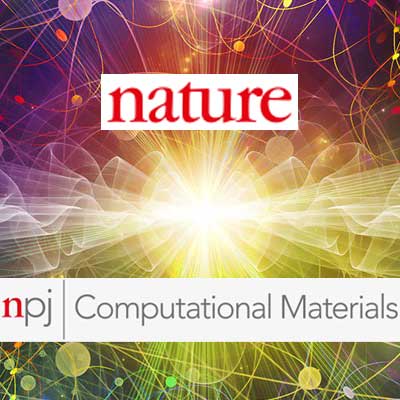Machine learning and data-driven methods in computational surface and interface science
IF 11.9
1区 材料科学
Q1 CHEMISTRY, PHYSICAL
引用次数: 0
Abstract
Machine learning and data-driven methods have started to transform the study of surfaces and interfaces. Here, we review how data-driven methods and machine learning approaches complement simulation workflows and contribute towards tackling grand challenges in computational surface science from 2D materials to interface engineering and electrocatalysis. Challenges remain, including the scarcity of large datasets and the need for more electronic structure methods for interfaces.

计算表面和界面科学中的机器学习和数据驱动方法
机器学习和数据驱动的方法已经开始改变对表面和界面的研究。在这里,我们回顾了数据驱动方法和机器学习方法如何补充模拟工作流程,并有助于解决从二维材料到界面工程和电催化的计算表面科学中的重大挑战。挑战仍然存在,包括大型数据集的稀缺性和对接口的更多电子结构方法的需求。
本文章由计算机程序翻译,如有差异,请以英文原文为准。
求助全文
约1分钟内获得全文
求助全文
来源期刊

npj Computational Materials
Mathematics-Modeling and Simulation
CiteScore
15.30
自引率
5.20%
发文量
229
审稿时长
6 weeks
期刊介绍:
npj Computational Materials is a high-quality open access journal from Nature Research that publishes research papers applying computational approaches for the design of new materials and enhancing our understanding of existing ones. The journal also welcomes papers on new computational techniques and the refinement of current approaches that support these aims, as well as experimental papers that complement computational findings.
Some key features of npj Computational Materials include a 2-year impact factor of 12.241 (2021), article downloads of 1,138,590 (2021), and a fast turnaround time of 11 days from submission to the first editorial decision. The journal is indexed in various databases and services, including Chemical Abstracts Service (ACS), Astrophysics Data System (ADS), Current Contents/Physical, Chemical and Earth Sciences, Journal Citation Reports/Science Edition, SCOPUS, EI Compendex, INSPEC, Google Scholar, SCImago, DOAJ, CNKI, and Science Citation Index Expanded (SCIE), among others.
 求助内容:
求助内容: 应助结果提醒方式:
应助结果提醒方式:


